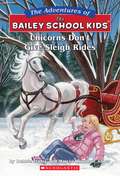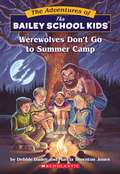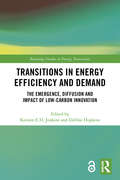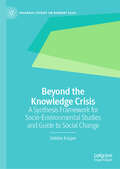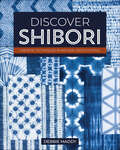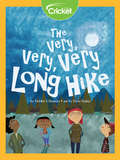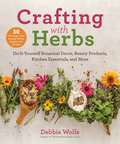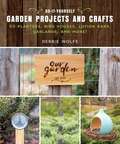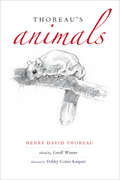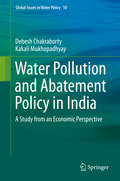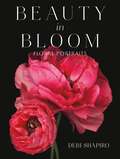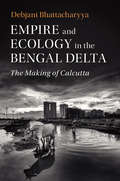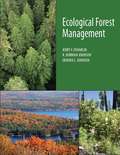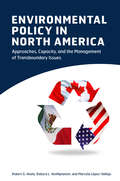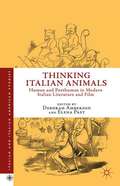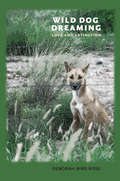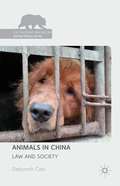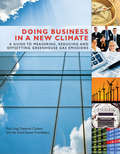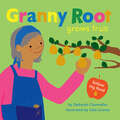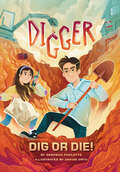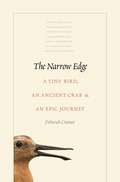- Table View
- List View
Unicorns Don't Give Sleigh Rides (The Adventures of the Bailey School Kids #28)
by Debbie Dadey Marcia Thornton JonesFrom the Book Jacket: There are some pretty weird grown-ups living in Bailey City. But could Mr. Withers at the Bailey Stables really be hiding a magical unicorn? The Bailey School Kids are going to find out! "That horse was an ordinary horse," Eddie said. "He was even wearing one of Mr. Withers' jingle bells." "Eddie must be right," Melody said. "After all, unicorns don't live in Bailey City." "And they definitely don't give sleigh rides," Howie added. Eddie nodded. "That horse I saw was just a horse,' he said. "And I have a plan to prove it!" Many other books about The Bailey School Kids are available from Bookshare.
Werewolves Don't Go To Summer Camp (The Adventures of the Baily School Kids #2)
by Debbie Dadey Marcia Thornton JonesThe new director at Camp Lone Wolf seems like a nice guy. But when the kids learn the legend of a local boy who disappeared and the wolf that prowls the campgrounds howling in the night, they start to wonder if Camp Lone Wolf is more than just a name. Mr. Jenkins is covered in hair, eats his meat almost raw, and has an obsession with wolves. But could he really be a werewolf?
Transitions in Energy Efficiency and Demand: The Emergence, Diffusion and Impact of Low-Carbon Innovation (Routledge Studies in Energy Transitions)
by Kirsten E.H. Jenkins Debbie HopkinsThe Open Access version of this book, available at http://www.tandfebooks.com/doi/view/10.4324/9781351127264, has been made available under a Creative Commons Attribution-Non Commercial-No Derivatives 4.0 license. Meeting the goals enshrined in the Paris Agreement and limiting global temperature increases to less than 2°C above pre-industrial levels demands rapid reductions in global carbon dioxide emissions. Reducing energy demand has a central role in achieving this goal, but existing policy initiatives have been largely incremental in terms of the technological and behavioural changes they encourage. Against this background, this book develops a sociotechnical approach to the challenge of reducing energy demand and illustrates this with a number of empirical case studies from the United Kingdom. In doing so, it explores the emergence, diffusion and impact of low-energy innovations, including electric vehicles and smart meters. The book has the dual aim of improving the academic understanding of sociotechnical transitions and energy demand and providing practical recommendations for public policy. Combining an impressive range of contributions from key thinkers in the field, this book will be of great interest to energy students, scholars and decision-makers.
Beyond the Knowledge Crisis: A Synthesis Framework for Socio-Environmental Studies and Guide to Social Change (Palgrave Studies on Norbert Elias)
by Debbie KasperIn the face of complex, interwoven, planet-scale problems, many cite the need for more integrated knowledge—especially across the natural and social sciences. Excessive specialization, they argue, gets in the way of knowing what we know, much less being able to use it to address urgent socio-environmental crises. These concerns, it turns out, go back centuries. This book picks up where most leave off, exploring the history of how we got here and proposing a way forward. Along the way, readers find that the synthesis long called for depends on theoretical advancements in social science. Fortunately, the author argues, we have everything we need to achieve those advancements, thanks largely to the contributions of Norbert Elias. Integrating his insights with history, science, sociological theory, and more, this book neatly packages the upgraded paradigm we need to be able to meaningfully address complex socio-environmental problems and more intentionally shape humanity’s collective future.
Discover Shibori: Creative Techniques in Natural Indigo Dyeing
by Debbie MaddyExplore the captivating world of traditional Shibori techniques. Learn techniques such as shape resist, stitch resist, pole wrapping, pleat, bind, looped binding, and bound resist in this practical guide by expert shibori teacher Debbie Maddy. From selecting and preparing fabrics to setting and maintaining an indigo vat, this book provides a solid foundation for beginners while also delving into sophisticated techniques such as Katano pleating and stitching that will elevate your projects. Apply your newly acquired skills in six inspiring projects to showcase your freshly dyed fabric, including a scarf, a shawl, an apron, a pillow, a table runner, and a quilt. Not just the basics of shibori and indigo dyeing, discover unique techniques to elevate your craft Learn 35 meditative shibori techniques, including wrapping, pleating, folding, slow stitching, and more Master three natural indigo vats and show off your dyed fabrics in six stunning projects, including a pillow, table runner, quilt, apron, scarf, and shawl
The Wind and the Sun (Leveled Readers 2.6.3)
by Debbie O’BrienIn this fable, the Sun and the Wind have a contest.
Glaciers Are Alive
by Debbie S. MillerThis environmental picture book introduces young science and nature lovers to the wonders of glaciers, the wildlife that call them home, and how important they are to the health of our planet.A glacier may look forbidding and empty, but it supports abundant life. Follow a glacier as it flows from mountain to ocean, providing a home for ice worms, birds, bears, and more. Where the glacier meets the sea, it creates a rich environment for marine life such as seals, otters, and whales. As glaciers melt at a rapid rate due to climate change, their disappearance impacts not only the wildlife that calls them home, but also all life on earth. Glaciers are alive, and they need our protection!
The Very, Very, Very Long Hike
by Debbie UrbanskiA story about two moms and their two children, Edun and Will, going on a hiking and camping trip in the mountains. At first, grump Edun doesn't want to hike, but she comes to love the imagination and wonder of the outdoors. She discovers animal tracks, rocks, and trees, and then takes a drink of water from a glacier.
Crafting with Herbs: Do-It-Yourself Botanical Decor, Beauty Products, Kitchen Essentials, and More
by Debbie WolfeCapture the beauty, fragrance, and power of herbs in these delightful crafts for home and garden. Why craft with herbs? They're easy to grow, beautiful, fragrant, full of health benefits, and are incredibly versatile! Herbs are best known for their medicinal and culinary uses, but there&’s so much more you can do with them. From spray disinfectants to wreaths and garlands, custom herb salts to homemade skincare products, there's something here for every room of your house—and everyone on your gift list! Learn how to make beautiful and useful items such as:Smudge SticksHerb SachetsHanging Herbal SwagNatural ConfettiHerbal Cleaning VinegarsHerb salts (with recipes for different blends)Herbal Teas Compound Herb ButterLavender Neck WrapSimple Herbal BalmAnd much more!In addition to the crafts, learn how to grow, prune, harvest, dry, and store your favorite herbs. Woven throughout are helpful tidbits on the wellness properties and history of herbs.Create useful crafts that will beautify your home and make wonderful DIY gifts!
Do-It-Yourself Garden Projects and Crafts: 60 Planters, Bird Houses, Lotion Bars, Garlands, and More
by Debbie WolfeImprove Your Garden and Home with Easy DIY Projects and Beautiful Botanical Crafts Create your dream garden with simple bird baths, herb drying racks, and unique planters. And bring the outdoors indoors with natural fabric dyes, pressed flower paper, and herbal bouquets. <P><P>DIY Garden Projects and Crafts book relies on home grown and foraged materials that will inspire creativity and capture the bounty of the seasons. The sixty practical and decorative projects for use in the garden and home include: <br>Gardener's Tool Apron <br>Metal garden charms <br>Veggie Market Tote <br>Macrame produce bag <br>Gourd bird feeder <br>Kirigami leather hanging planter <br>Tomato cage plant stand <br>Shibori Dyed Fabric <br>Herbal lotion bars <br>Gardener hand scrub <br>All-purpose thyme cleaner <br>And more! <P><P>Do-It-Yourself Garden Projects and Crafts features detailed, step-by-step instructions as well as simple crafting and gardening tips that will make your projects successful.
River
by Debby AtwellWith direct language and colorful paintings, Debby Atwell relates the changes that occur through the centuries along a riverbank, from the arrival of the first humans to the coming of the first settlers, from the industrial revolution to the present day. As the river flows the country grows and progresses along its banks-sometimes for better and sometimes for worse. When overuse and carelessness finally take their toll, the river's natural beauty and resources are compromised. Can the river thrive permeated by pollution and waste? Travel downstream through time as Atwell's evocative text and narrative paintings enliven the beauty and spirit of the river, revealing life as it was and telling how it has evolved.
Thoreau's Animals
by Henry David Thoreau Debby Cotter Kaspari Geoff WisnerFrom Thoreau's renowned Journal, a treasury of memorable, funny, and sharply observed accounts of his encounters with the wild and domestic animals of Concord Many of the most vivid writings in the renowned Journal of Henry David Thoreau concern creatures he came upon when rambling the fields, forests, and wetlands of Concord and nearby communities. A keen and thoughtful observer, he wrote frequently about these animals, always sensitive to their mysteries and deeply appreciative of their beauty and individuality. Whether serenading the perch of Walden Pond with his flute, chasing a loon across the water's surface, observing a battle between black and red ants, or engaging in a battle of wits with his family's runaway pig, Thoreau penned his journal entries with the accuracy of a scientist and the deep spirituality of a transcendentalist and mystic. This volume, like its companion Thoreau's Wildflowers, is arranged by the days of the year, following the progress of the turning seasons. A selection of his original sketchbook drawings is included, along with thirty-five exquisite illustrations by naturalist and artist Debby Cotter Kaspari.
Water Pollution and Abatement Policy in India
by Kakali Mukhopadhyay Debesh ChakrabortyIndia has been traditionally well-endowed with large freshwater reserves, but increasing population, urbanization and agricultural growth in recent decades are causing overexploitation of surface and groundwater. As consumption of water grows, wastewater increases significantly and in the absence of proper measures for treatment and management, is polluting existing freshwater reserves. As a result, water pollution has emerged as one of the nation's gravest environmental threats. This book draws a link between water pollution generated by different industries and the various economic activities of the Indian economy using the Input-output framework. It constructs a detailed water pollution coefficient matrix involving different types of water pollutants. The book estimates the total amount of water pollution generated directly and indirectly in different sectors and activities, and also calculates the water pollution content in India's foreign trade sector. It also accounts for defensive expenditure from water pollution and estimates Green GDP for the extent and scope of environmental challenges. Analysis of the result indicates the variation in the pollution content of different economic activities. Finally, the book offers a portfolio of policies and assesses the implications of such policies on pollution generation in India.
Beauty in Bloom: Floral Portraits
by Debi ShapiroA poppy bud captured moments before blossoming. A statuesque tuberose as if carved out of alabaster. A pair of delicate pink dahlias joined like two starfish floating in the sea.Beauty in Bloom is the debut collection of work by Debi Shapiro, a visual artist who creates beautiful imagery inspired by her two passions—flowers and photography. More than 200 floral portraits in this exquisite book capture the depth and luminosity of a single bloom to lush bouquets with breathtaking intimacy and vibrant energy. Every translucent petal, tender green stem, and grain of pollen shimmers with painterly detail reminiscent of the works of the great botanical artists and engravers of the eighteenth century. From the bold crimson beauty of an Oriental poppy to the seductive lure of a pink Protea peeking out from behind its thick foliage to the timeless classic beauty of a garden rose, it&’s a flower lover&’s dream. Debi&’s work truly makes every bloom a leading lady.
Empire and Ecology in the Bengal Delta: The Making Of Calcutta (Studies In Environment And History )
by Debjani BhattacharyyaWhat happens when a distant colonial power tries to tame an unfamiliar terrain in the world's largest tidal delta? <P><P>This history of dramatic ecological changes in the Bengal Delta from 1760 to 1920 involves land, water and humans, tracing the stories and struggles that link them together. Pushing beyond narratives of environmental decline, Bhattacharyya argues that 'property-thinking', a governing tool critical in making land and water discrete categories of bureaucratic and legal management, was at the heart of colonial urbanization and the technologies behind the draining of Calcutta. The story of ecological change is narrated alongside emergent practices of land speculation and transformation in colonial law. Bhattacharyya demonstrates how this history continues to shape our built environments with devastating consequences, as shown in the Bay of Bengal's receding coastline.<P> The first environmental history of land markets in South Asia.<P> Explores how the law responded to the ecological changes of the Bengal delta and how those laws continue to shape our contemporary relationship to the land and the water.<p> Shows landscapes as essentially fluid and changeable, destabilizing the fixities of cartography.
Ecological Forest Management
by Jerry F. Franklin K. Norman Johnson Debora L. JohnsonFundamental changes have occurred in all aspects of forestry over the last 50 years, including the underlying science, societal expectations of forests and their management, and the evolution of a globalized economy. This textbook is an effort to comprehensively integrate this new knowledge of forest ecosystems and human concerns and needs into a management philosophy that is applicable to the vast majority of global forest lands. Ecological forest management (EFM) is focused on policies and practices that maintain the integrity of forest ecosystems while achieving environmental, economic, and cultural goals of human societies. EFM uses natural ecological models as its basis contrasting it with modern production forestry, which is based on agronomic models and constrained by required return-on-investment. The book concludes with an overview of how EFM can contribute to resolving major 21st century issues in forestry, including sustaining forest dependent societies.
Environmental Policy in North America: Approaches, Capacity, And The Management Of Transboundary Issues
by Robert G. Healy Debora L. VanNijnatten Marcela López-VallejoThis comprehensive analysis of key issues in North American environmental policy provides an overview of how the US, Mexico, and Canada differ in their environmental management approaches and capacity levels, and how these differences play into cross-border cooperation on environmental problems. The book offers insights into transboundary cooperation both before and after NAFTA, and presents a framework for making environmental interaction more effective in the future. The book is organized into two parts. The first, more general, section compares the national contexts for environmental management in each country—including economic conditions, sociocultural dynamics, and political decision-making frameworks— and shows how these have led to variations in policy approaches and levels of capacity. The authors argue that effective environmental governance in North America depends on the ability of transboundary institutions to address and mediate these differences. The book's second section illustrates this argument, using four case studies of environmental management in North America: biodiversity and protected areas, air pollution (smog); greenhouse gas reduction, and genetically modified crops.
Thinking Italian Animals
by Deborah Amberson Elena PastSituated on the cutting edge of scholarship in a variety of fields, this bracing volume draws together essays on Italian writers and filmmakers whose work engages with nonhuman animal subjectivity. Analyzing works from unification to the present, they address three major strands of current philosophical thought: the perceived borders between man and nonhuman animals, historical and fictional crises facing humanity, and human entanglement with the nonhuman and material world. These essays are driven by philosophical, theoretical, and ethical questions that interrogate Italian cultural production in provocative new ways, and their analysis has implications not simply for Italianists, but for a range of scholars doing work within cross-disciplinary fields such as animal studies, ecocriticism, and posthuman philosophy.
Wild Dog Dreaming: Love and Extinction (Under the Sign of Nature: Explorations in Ecocriticism)
by Deborah Bird RoseWe are living in the midst of the Earth's sixth great extinction event, the first one caused by a single species: our own. In Wild Dog Dreaming, Deborah Bird Rose explores what constitutes an ethical relationship with nonhuman others in this era of loss. She asks, Who are we, as a species? How do we fit into the Earth's systems? Amidst so much change, how do we find our way into new stories to guide us? Rose explores these questions in the form of a dialogue between science and the humanities. Drawing on her conversations with Aboriginal people, for whom questions of extinction are up-close and very personal, Rose develops a mode of exposition that is dialogical, philosophical, and open-ended.An inspiration for Rose--and a touchstone throughout her book--is the endangered dingo of Australia. The dingo is not the first animal to face extinction, but its story is particularly disturbing because the threat to its future is being actively engineered by humans. The brazenness with which the dingo is being wiped out sheds valuable, and chilling, light on the likely fate of countless other animal and plant species."People save what they love," observed Michael Soulé, the great conservation biologist. We must ask whether we, as humans, are capable of loving--and therefore capable of caring for--the animals and plants that are disappearing in a cascade of extinctions. Wild Dog Dreaming engages this question, and the result is a bold account of the entangled ethics of love, contingency, and desire.
Animals in China: Law And Society (The Palgrave Macmillan Animal Ethics Series)
by Deborah CaoJust as China is called the world factory for manufactured goods, it is also a world factory for manufactured animal cruelty in a new phenomenon of globalized animal cruelty. Animals in China examines animal protection in China in its legal, social and cultural contexts.
Doing Business in a New Climate: A Guide to Measuring, Reducing and Offsetting Greenhouse Gas Emissions
by Morag Carter Paul Lingl Deborah CarlsonAround the world, a growing number of businesses are taking steps to reduce their climate impact by managing their greenhouse gas emissions. At the same time, these businesses are discovering that effective greenhouse gas management can enhance their brands, motivate employees, increase operational efficiencies, and save money. This guide walks readers through the key activities that make up a greenhouse gas management program, including measuring, reducing, and offsetting emissions and developing a communications strategy around the program. Throughout, case studies of over fifty leading businesses from around the world highlight innovation and solutions to common challenges, and further resources are provided for each section. While this guide was developed primarily for the business community, many of the greenhouse gas management practices explored can also be used by other organizations that wish to reduce their climate impact, including government agencies, municipalities, non-governmental organizations and educational institutions. Published with the David Suzuki Foundation.
Granny Root Grows Fruit (Follow My Food)
by Deborah ChancellorFollow Granny Root as she spreads compost, plants seedlings, and picks fruit in this stylish and fact-filled picture book, part of the Follow My Food series that looks at the ways different foods are produced.Blueberries, raspberries, apples, and pears—they all come to the table after months of hard work growing them in the ground, on bushes, or in trees. Granny Root Grows Fruit is a simple but effective way to teach children (and adults!) about the process of growing berries and fruit. Featuring attractive collage-style art, the book also includes a matching game, a display of different types of fruits, berries, and nuts, and a recipe using fruits and berries.
Digger: Dig or Die!
by Deborah CholetteIn this dystopian middle-grade novel, a climate change disaster forces humanity to flee as Earth's atmosphere escapes into space. Narrated by siblings Nick and Lily, the story follows their resourcefulness in aiding neighbors. Nick's digging prowess and Lily's strategic planning become vital as oxygen diminishes. Nick unveils a hidden tunnel connecting houses, forming a lifesaving network as breathable air dwindles. Lily crafts a communication system with walkie-talkies and baby monitors to share critical information. A frantic race ensues to complete the tunnels before food and oxygen become scarce, a tense battle for survival in a world teetering on the brink.
The Narrow Edge
by Deborah CramerThousands of ravenous tiny shorebirds race along the water's edge of Delaware Bay, feasting on pin-sized horseshoe-crab eggs. Fueled by millions of eggs, the migrating red knots fly on. When they arrive at last in their arctic breeding grounds, they will have completed a near-miraculous 9,000-mile journey that began in Tierra del Fuego. Deborah Cramer followed these knots, whose numbers have declined by 75 percent, on their extraordinary odyssey from one end of the earth to the other--from an isolated beach at the tip of South America all the way to the icy tundra. In her firsthand account, she explores how diminishing a single stopover can compromise the birds' entire journey, and how the loss of horseshoe crabs--ancient animals that come ashore but once a year--threatens not only the survival of red knots but also human well-being: the unparalleled ability of horseshoe-crab blood to detect harmful bacteria in vaccines, medical devices, and intravenous drugs safeguards human health. Cramer offers unique insight into how, on an increasingly fragile and congested shore, the lives of red knots, horseshoe crabs, and humans are intertwined. She eloquently portrays the tenacity of small birds and the courage of many people who, bird by bird and beach by beach, keep red knots flying.
